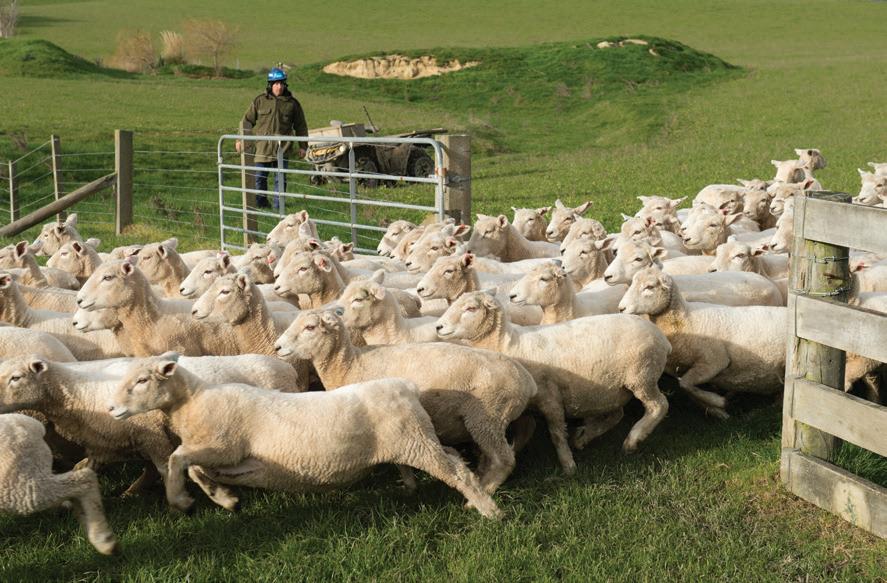
3 minute read
Filling the gap
by Ruralco
Balancing the ration for pre-tup ewes while considering seasonal changes can prove challenging.
WORDS AND IMAGE SUPPLIED BY SEALESWINSLOW
Advertisement
Be proactive by accurately calculating animal requirements, in relation to feed supply. The pre-tup period is a key time of the season when we can influence productivity and profitability from the flock. Determining the Gap The first step is to determine if there is a feed gap to fill. There may be enough of a feed supply to meet the ewe’s daily requirements, providing she is already at the ideal body condition score (BCS) of 3.5, however there may not be enough to preferentially feed those ewes below a 3 BCS. The pasture supply is determined by pasture covers and average daily growth rates.1 For example, a 65kg ewe requires 1.07kgDM/ day, providing she is at an ideal BCS of 3.5. Conversely, if the ewe is a BCS of 3, and we want to increase her liveweight at the rate of 50g/day, then she requires 1.32 kgDM/ day. Therefore, an additional 250gDM/ day is required to achieve the increase in liveweight and supply enough quantity of DM for the ewe. The nutrient requirements of a ewe changes at different physiological states. The requirements for a pre-tup ewe will be different to a ewe over the summer: in other words, we need to accommodate for the rising plane of nutrition or flushing. The main consideration is that light ewes make significant liveweight gains and put condition on over the flushing period. Ideally condition gain for light ewes will start 2-3 weeks before the rams go out and continue for the first 3–4 weeks of mating. An improvement in ewe condition will boost ovulation, resulting in an increased number of eggs at the time of mating, optimising conception rates and increasing the lambing percentage. Identify Limiting Nutrients Setting the ewe up for reproduction is critical. We can do this by identifying the limiting nutrients of the stock class. At pre-tup, the focus is on the increased energy needs of the ewe. The quality of the energy supplied will encourage good placental development and ensure viable pregnancies become well established. An energy dense feed like a grainbased pellet supplies starch for liveweight gain and fertility. This may be the best option if there is a shortage of available pasture, or if the feed on offer is of poor quality as determined by a pasture test. Knowing the quality and quantity of the feed on offer allows comparison to the animal requirements. In our example the 65kg ewe in optimal body condition (3.5 BCS) requires 11.5 MJME/ day, which ideal pasture quality through the autumn can provide. The requirement for the ewe with a body condition score of 3, increases to 14.3 MJME. To achieve liveweight gain and meet increased demand, we may need to incorporate an energy dense feed for best results. Therefore, if we are feeding 1kg/ DM of pasture tested at 11.5 MJME/kg DM, the energy intake is 11.5 MJ. If we know from our feed smart calculation that the requirement of the ewe is 14.3 MJME, we can determine that the limiting nutrient is 2.8 MJ of metabolisable energy/head/day. SealesWinslow Sheep Pellets are 12 MJME/kgDM and we need 230g to fill the gap and meet the limiting nutrient energy requirements.2 Filling the feed gap and balancing the ration for pre-tup ewes requires accurate calculation of the animal demand and identifying limiting nutrients for this stock class. An energy dense feed such as SealesWinslow Sheep Pellets will provide a high energy ration, ensuring that all sheep receive a balanced, nutritious diet. For information and solutions about how to fill the feed gap on your farm, contact your local SealesWinslow technical sales representative.
1www.beeflambnz.com/knowledge-hub 2www.feedsmart.co.nz/











